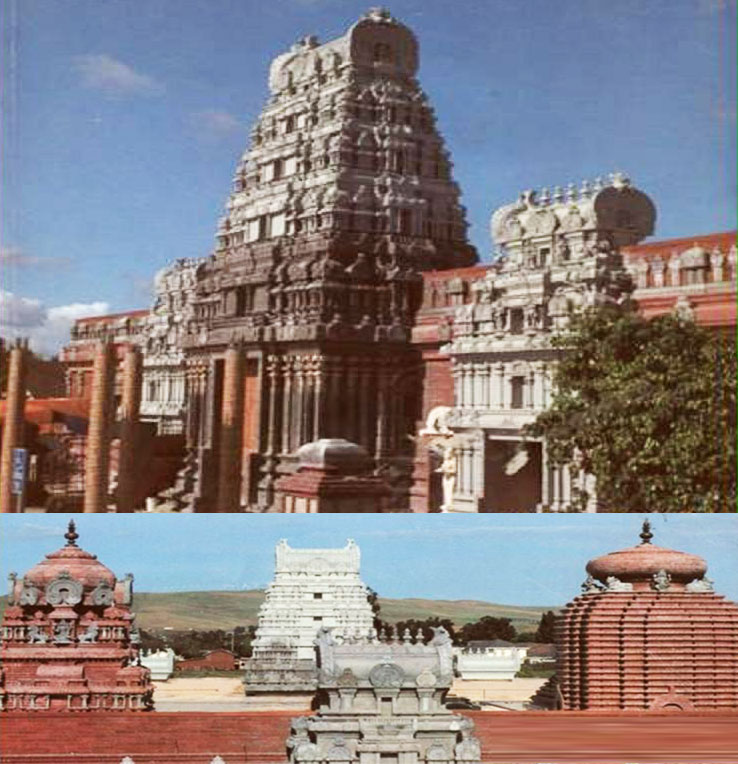Information


Maha kumbhabhishekams, July 1998
Twelve years after the Kumbhabhishekam, the first Maha kumbhabhishekam was performed. This was also an occasion when needed renovations and repairs were done within the temple. During these twelve years, a number of new vigrahas, such as the Navagrahas, Dasabhuja Durga, Kalabhairava and Hanuman had been installed in the temple. Also, other improvements to the temple had been made: the Rajagopuram and the dwajasthambha (flag poles), were built. Nandi and Garuda were installed. All of these were consecrated at this auspicious time. During this ceremony, to enable maintenance and restoration work to be carried out in the shrines, the priests first transferred the energy of the temple deities into brass kumbhas which were then installed in the yagashala. The new vigrahas and kalashas were sanctified by purifcatory rituals with water, milk and other ingredients, followed by netronmelana (eye-opening ceremony) for the new vigrahas, homas, and the ritual offering of prasadam. The shilpis then renovated the shrines with ashtabandhana, and installed the new vigrahas. After the installation was completed, the priests carried the kumbhas in procession and performed the Maha kumbhabhishekam by pouring the sacred water from the kumbhas on the Gopurams and the vigrahas, as the priests chanted special mantras. With this, the divine energy was transferred back to the moola vigrahas of the temple as well as to the new vigrahas. The priests subsequently performed the main arathi and invoked divine blessings on devotees.

For up-to-date information on Maha Kumbhabhishekam events, please contact:
MKA 2022 Organizing Committee at mka22apexcommittee@livermoretemple.org
MKA Publicity Chair, Padmaja Madhusudan at (925)-368-3519
Temple Office at (925)-449-6255 or Visit www.livermoretemple.org
MKA 2022 Organizing Committee at mka22apexcommittee@livermoretemple.org
MKA Publicity Chair, Padmaja Madhusudan at (925)-368-3519
Temple Office at (925)-449-6255 or Visit www.livermoretemple.org


